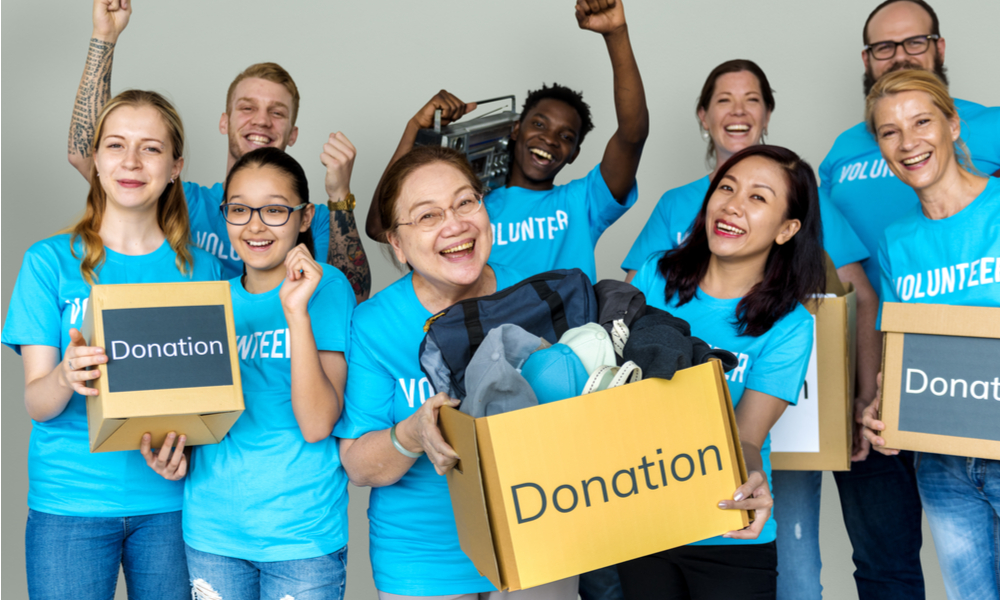Imaginative Nonprofit Fundraising Ideas: Increase Donations and Involvement
Wiki Article
The Function of Neighborhood Interaction in Nonprofit Fundraising: Structure Lasting Relationships for Lasting Support
Area engagement is significantly identified as an essential element of successful nonprofit fundraising. By fostering authentic relationships with neighborhood stakeholders, organizations can grow count on and loyalty, which are vital for sustainable assistance. However, the methods and methods utilized to involve communities differ extensively, increasing vital questions concerning effectiveness and effect. What are the very best techniques for cultivating these crucial connections, and just how can nonprofits measure their success in this field? Recognizing these dynamics might significantly affect the future of fundraising initiatives and the overall objective of not-for-profit organizations.Comprehending Area Engagement
Area involvement is an important component of effective not-for-profit fundraising efforts. It describes the techniques and activities that organizations employ to get in touch with their local communities, fostering partnerships that are mutually valuable. Understanding area involvement includes recognizing its diverse nature, that includes partnership, outreach, and involvement. Nonprofits have to recognize key stakeholders-- such as community participants, local services, and other organizations-- to create effective engagement approaches.Efficient community involvement is predicated on active listening and responsiveness to the requirements and passions of the area. This procedure entails getting comments, understanding area characteristics, and guaranteeing that the company's objective straightens with regional top priorities. Engaging the area can take numerous kinds, including public meetings, volunteer possibilities, and collaboration initiatives, each created to motivate involvement and investment in the company's objectives.
Moreover, community involvement must be approached as a recurring discussion as opposed to a single initiative. By fostering a comprehensive environment where community voices are listened to and valued, nonprofits can build a strong structure for future fundraising ventures. Eventually, a deep understanding of neighborhood engagement equips companies to produce genuine connections that improve their total efficiency and sustainability.
Advantages of Solid Relationships
Solid relationships formed via area engagement yield various advantages for nonprofit fundraising initiatives. Most importantly, these connections foster trust and trustworthiness, vital elements in encouraging donors to contribute. When possible fans see a not-for-profit proactively associated with their community, they are most likely to count on its objective and influence.
Furthermore, these relationships help with reliable communication. Nonprofits can leverage their links to share tales of impact, updates, and requires, making sure that advocates continue to be educated and engaged. This open line of interaction not just enhances bonds but likewise urges word-of-mouth promo, increasing the nonprofit's reach.
Last but not least, strong area ties can draw in brand-new partners and enrollers. Companies and people are a lot more inclined to straighten with organizations that show meaningful area involvement, giving extra resources and assistance that can significantly improve fundraising abilities. Therefore, growing durable connections through area engagement is important to a not-for-profit's long-term fundraising success.
Methods for Reliable Involvement
How can nonprofits efficiently engage their areas to boost fundraising efforts? Regular updates, involving web content, and calls-to-action can galvanize area rate of interest and participation.2nd, organizing area occasions, such as workshops, volunteer chances, or fundraising drives, helps with face-to-face communication, enabling nonprofits to display their effect and efforts. These occasions not only raise funds yet likewise cultivate relationships and enable neighborhood members to involve directly with the cause.
Third, implementing personalized interaction approaches can boost involvement. Customizing messages to details benefactor sections based on interests and previous payments cultivates a sense of belonging and investment in the organization's mission.
Finally, producing collaborations with regional organizations and community leaders can intensify outreach initiatives. Joint initiatives can boost exposure and credibility, showing a cumulative commitment to the area's well-being. By integrating these techniques, nonprofits can develop long-term connections that boost fundraising initiatives and drive lasting assistance.
Determining Involvement Success
While engaging the neighborhood is crucial for successful not-for-profit fundraising, measuring the efficiency of these interaction initiatives is equally crucial. Developing clear metrics allows organizations to examine just how well they are getting in touch with their target market and attaining their fundraising objectives. Key check that efficiency indications (KPIs) such as donor retention prices, volunteer engagement levels, and involvement on social media platforms give tangible data for examination.
Consistently analyzing these metrics allows companies to pivot their techniques when needed, making certain that neighborhood interaction stays aligned with their total objective. Additionally, sharing these outcomes with stakeholders promotes transparency and constructs depend on, encouraging additional area involvement. Inevitably, a robust dimension structure not only notifies future fundraising initiatives however additionally enhances the partnership between the nonprofit and its fans, preparing for lasting success.
Instance Studies in Neighborhood Impact
Various study show the extensive influence that community interaction can carry nonprofit fundraising success. One significant instance is the "Food for Idea" effort, where a local food bank partnered with institutions and businesses to host community dinners. These events not just elevated funds but likewise promoted a feeling of belonging amongst individuals, dramatically increasing donor retention rates.One more compelling situation is the "Environment-friendly Spaces Project," which involved local residents in the revitalization of metropolitan parks. This campaign not only garnered financial backing from regional organizations however additionally grew a volunteer base that added to recurring upkeep and shows. The feeling of possession read this post here and satisfaction amongst neighborhood members translated into sustained contributions.
In the world of arts, the "Art for All" project efficiently involved regional artists and customers to create collaborative art installations, leading to increased visibility and contributions for a neighborhood arts not-for-profit.
These examples highlight that when nonprofits prioritize area participation, they can produce long-term connections that improve fundraising efforts, ensuring lasting assistance and promoting a lively neighborhood culture. Such cases show that neighborhood interaction is not merely a technique but a necessary pillar of nonprofit success.
Verdict
Finally, neighborhood engagement is integral to the success of not-for-profit fundraising efforts. By cultivating solid connections with local stakeholders, companies improve depend on and integrity, causing improved benefactor retention and loyalty. Executing efficient interaction strategies and measuring their effect makes sure that nonprofits can adapt and thrive. Inevitably, a durable structure of neighborhood support not only enhances fundraising possible yet likewise grows a culture of cooperation, vital for attaining long-lasting business objectives and sustaining meaningful effect.Nonprofits must determine vital stakeholders-- such as community participants, local services, and other organizations-- to develop reliable engagement methods.

In verdict, neighborhood engagement is indispensable to the success of not-for-profit fundraising efforts.
Report this wiki page